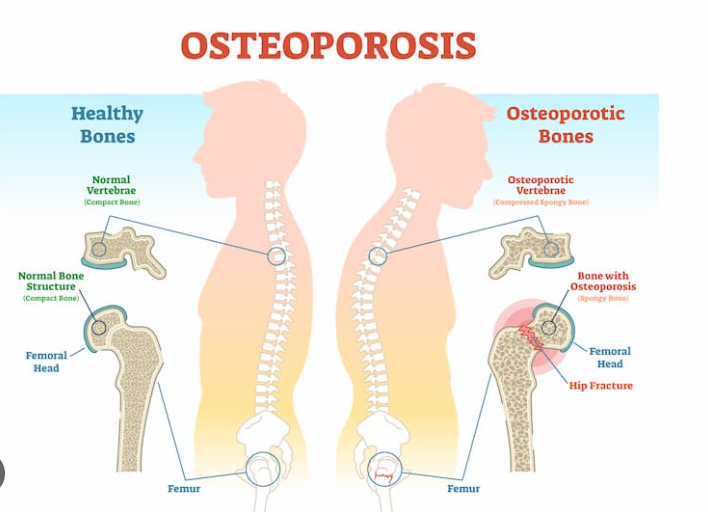Osteoporosis, a common bone disease, puts millions at higher risk for fractures.
The term “porous bone” refers to the disorder known as osteoporosis, which causes a decrease in bone density and quality. Roughly 10 million Americans are afflicted by the illness; most of them are women. It increases the risk of fractures, such as a hip fracture following a fall, and makes bones brittle and fragile. And for senior citizens who lose their mobility, those bone fractures can be disastrous.
Bones are dynamic structures that are always changing. According to the National Institutes of Health Osteoporosis and Related Bone Diseases National Resource Center, a person’s bone mass, or the quantity of bone tissue in their skeleton, keeps growing until they reach their late 20s, at which point they reach peak bone mass. It’s approximately that moment.
Also read-Psoriatic Arthritis : A Patient’s Guide To Psoriatic Arthritis And Its Symptoms
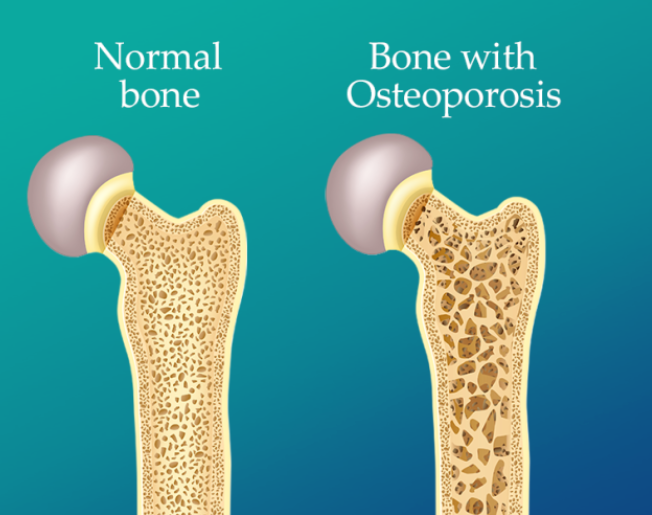
Less bone is made and more is reabsorbed, or lost, as a person ages due to hormonal changes. This can lead to osteopenia, which is a prelude to osteoporosis, and eventually osteoporosis, along with a number of other risk factors.
“There’s a slow, steady decline in bone density” from the time you reach peak bone density until you pass away, according to rheumatologist Dr. Linda A. Russell of the Hospital for Special Surgery in New York City. Additionally, there is a more rapid loss in women around menopause, followed by a slowdown. Therefore, as we get older, we do lose bone, which raises the possibility of fractures.”
Types of Osteoporosis
Most people talk about osteoporosis as a single-bone disease. It is occasionally referred to as primary or secondary osteoporosis, though. The first kind is caused by menopause-related hormonal changes and aging naturally. The latter is brought on by an additional underlying factor, like a drug or health issue.
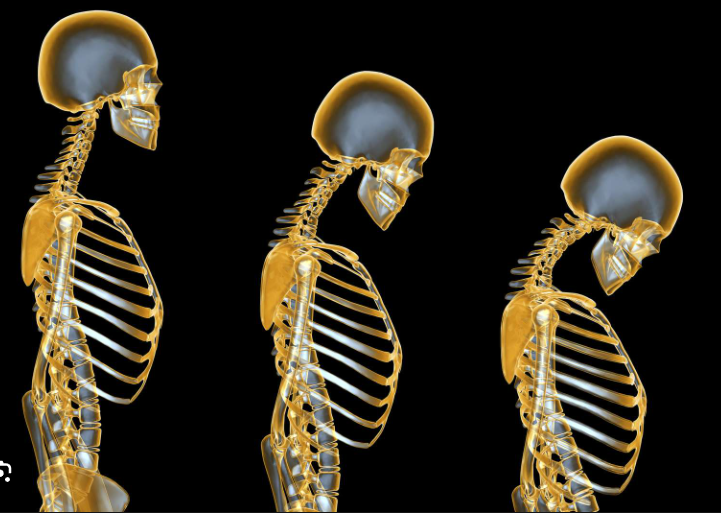
The two types of primary osteoporosis are:
- Postmenopausal osteoporosis, or type I osteoporosis
- Type II, or senile, osteoporosis
Primary type I osteoporosis typically occurs about 10 to 15 years after a woman has gone through menopause, when estrogen and progesterone levels have dropped. Estrogen helps regulate cells called osteoclasts that absorb bone tissue. Progesterone supports osteoblasts that promote bone formation. As levels of these hormones decline, bone is lost at a higher rate than it’s made.
Causes
A person may be more susceptible to the condition due to a variety of factors, including hormonal fluctuations, sex, age, and the different secondary causes of osteoporosis mentioned above.
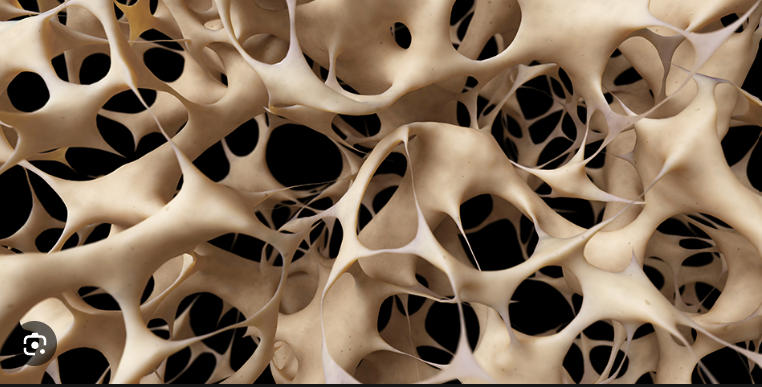
Those include:
- Family history of the disease.
- Race—in particular, being Caucasian or Asian
- Body type: being thinner or having a small frame
- Lifestyle factors like tobacco use or drinking excessively
- Not exercising or being sedentary.
Symptoms
Osteoporosis develops over time, so it often goes undetected until a person sustains a fracture.
Not all people have signs or symptoms, but for those who do, they may include:
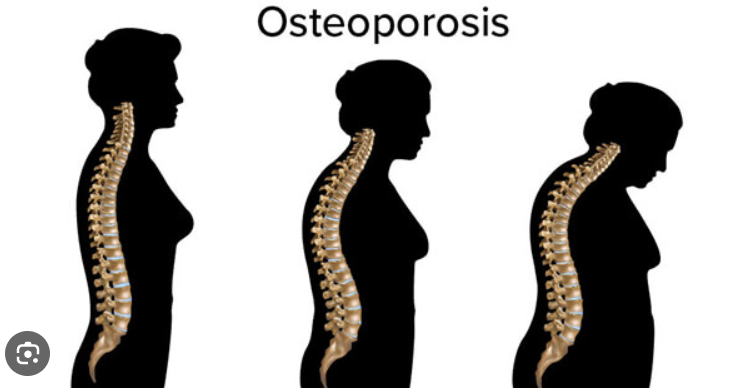
- Sustaining a fracture, especially those known as fragility fractures, which can happen following a slight sprain or fall and are not brought on by a traumatic injury,
- An oblong-backed form.
- A person’s appearance or stooping makes them appear shorter.
- Back discomfort.
Sometimes people with osteoporosis sustain what’s called a compression fracture in the spine due to the normal pressure of the spinal column being upright but the bone being weakened. This can cause a person to stoop.
In addition to hip fractures in older people, wrist fractures may occur in individuals with postmenopausal osteoporosis.
Diagnosis
The U.S. Preventive Services Task Force recommends women 65 years of age and older be screened for osteoporosis to prevent osteoporotic fractures—those injuries related to the bone disease. The independent panel of national experts also recommends that some postmenopausal women under 65 be considered for screening based on a clinical assessment of their risk factors, which range from having parents who’ve sustained hip fractures to smoking and excessive alcohol consumption.
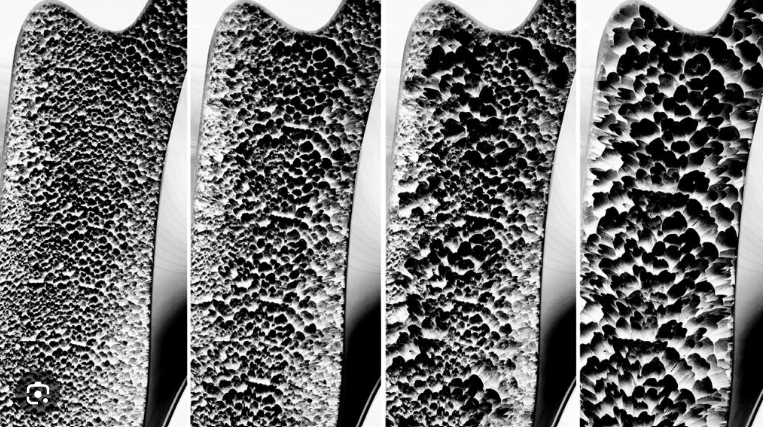
Treatments
Thankfully, there are methods to strengthen your bones and reduce the likelihood that you will experience bone deterioration. To treat osteoporosis, a mix of medication and lifestyle modifications is typically required.
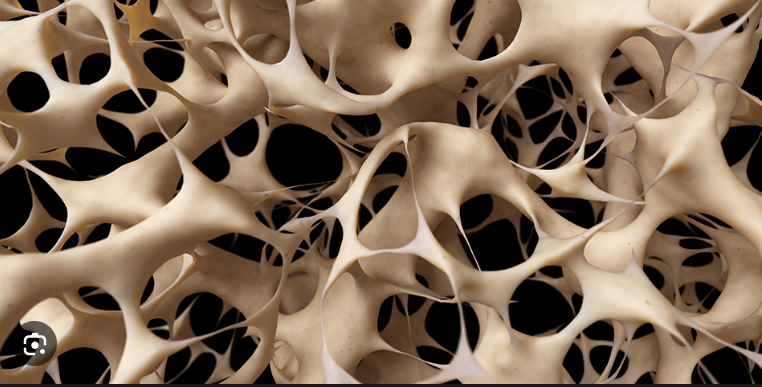
Nutrition and diet play a role in this. Does the patient take the recommended amounts of calcium and vitamin D each day? This entails obtaining at least 1,000 mg of calcium for most adults, or 1,200 mg for women over 50. Professionals usually advise obtaining 800 international units, or IU, of vitamin D daily; however, some argue that much more is required.
Also read-Bursitis : A Patient’s Guide To Bursitis And Its Symptoms
images source: Google
Disclaimer: The opinions and suggestions expressed in this article are solely those of the individual analysts. These are not the opinions of HNN. For more, please consult with your doctor.







